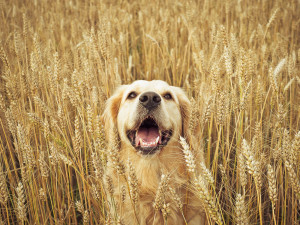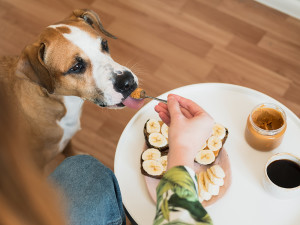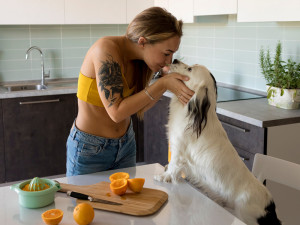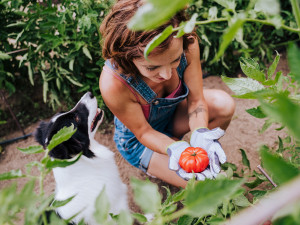Can My Dog Eat Celery?
Yes, celery is one of the green veggies you can share with your dog – but with some precautions
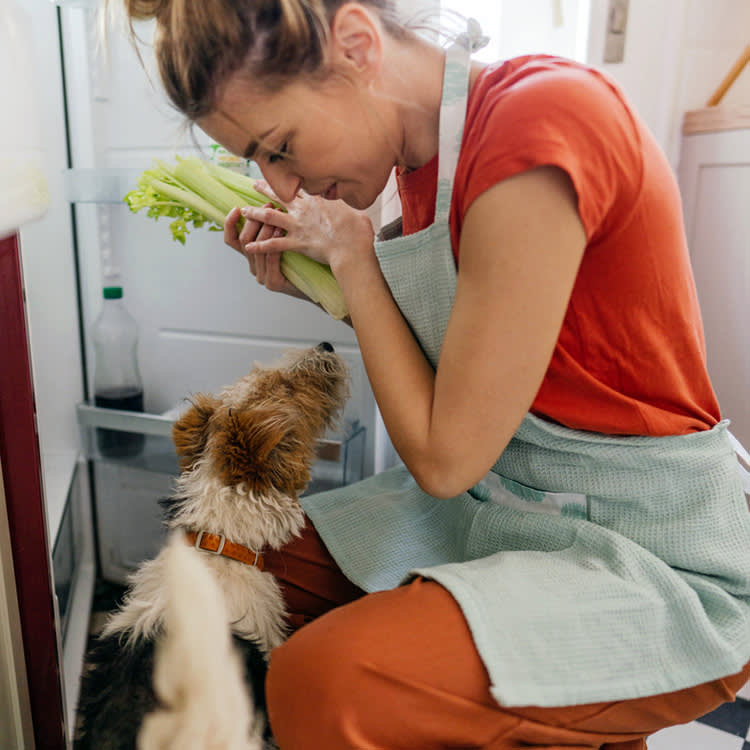
share article
Alright, let’s face it, celery might not win the aromaopens in a new tab award when compared to sizzling bacon or the savoury allure of a salty ham slice.
So, your dog may not go crazy at the sniffopens in a new tab of a green veggie, but surprise surprise – they might actually enjoy the refreshing taste and crunchy texture that comes with this vegetable.
Bonus points: there are some nutritiousopens in a new tab benefits to feeding your dog celery as long as it’s prepared correctly and served in moderate amounts.
Celery: nutrition facts for dogs
Celery, often enjoyed with hummus, peanut butteropens in a new tab or yoghurtopens in a new tab is a refreshing, low-fat snack for us humans. And, it can also be a great snack for your dog (without the dips).
Celery is very low in fat and cholesterol and is an excellent source of fibre, vitaminsopens in a new tab A, C, and K, folate, potassium and manganese.
Is celery good for dogs?
“Celery is made up of 95% water and has a low calorie count so it’s one of the better choices for a dog that enjoys vegetables,” says Dr Kate McCrossan, a veterinary surgeon practising in Northern Ireland. “It also contains vitamins K, A and C, as well as iron, potassium and calcium, which can boost your dog’s immune system.”
Celery is also a crunchy, clean vegetable that can support healthy teeth and gumsopens in a new tab. If you have a pooch that’s working on shedding a few extra poundsopens in a new tab, it can be a particularly good treat option since it’s low in calories – just consult with your vet before doing so.
How much celery can a dog eat?
Overall, while celery is a good treat option, your dog doesn’t require it in their diet nor should it be fed as a meal replacement. A complete and balanced dog food should already give your furry friend all the nutrition they need for a happy and healthy life.
But, is it possible for your to dog eat too much celery? “It’s best to think of it as part of their treat intake. Treats shouldn’t replace meals and the same applies for celery,” says Dr McCrossan.
What are the risks of feeding celery to a dog?
Although celery is considered to be safe for dogs, like humans, every dog is different. Some dogs will love munching on this green vegetable, while others will turn their noses up at it.
Similarly, certain dogs can eat small amounts without any problems, while others will end up with an upset stomachopens in a new tab. Make sure that if you’re feeding your dog celery for the first time, you sample a little bit and observe for reactions.
How to prepare celery for dogs
Feeding celery to your dog can also pose choking risks as it’s hard and fibrous. Smaller dogs in particular may struggle to eat large chunks of it.
“It’s best to cut celery into small, bite-sized pieces for your dog to munch on,” says Dr McCrossan. It’s also essential to serve it plain without any seasoning or sauce, which can cause harm to dogs.”
The bottom line: can dogs eat human food?
There are many safe human foods that dogs can enjoy. It’s best to consult an expert or do your research from a reputable source before feeding your dog something that isn’t specifically for dogs.
Any human food given is added as a treat, not as part of their balanced diet so it should not replace your dog’s main meal. If you are wary of giving your dog human food, it’s better to be safe than sorry because generally, your dog will be getting all nutrients from a complete and balanced dog food.
Other veggies that are safe for dogs
Green beans
Keeping it in the green family, green beans are a great source of vitamins A, C and K. Green beans also provide minerals like iron and calcium. It’s best to serve a few cooked and cooled without seasoning.
Broccoli
Dogs who enjoy crunching on greens will love broccoli, which can be served raw or cooked without seasonings. Broccoli is an excellent source of fibre and can also provide vitamin C, which is beneficial for a healthy immune system. Keep the portions small and their intake infrequent though as the florets contain an ingredient that has the potential to cause an upset stomach in some dogs if ingested in large quantities.
Carrots
Carrots can be a great treat for your dog to munch on, especially if you have a poor puppy teethingopens in a new tab. They are a good source of potassium, vitamin B6 and an excellent source of beta-carotene. Best served raw or plainly cooked in small pieces.
Other veggies that are potentially dangerous
Garlic
Garlic contains compounds called disulfides and thiosulphates, which can be toxic to dogs. If consumed, it can damage the red blood cells leading to anaemia.
Onions
Onions contain a toxic principle known as N-propyl disulfide. This compound causes a breakdown of red blood cells, leading to anaemia in dogs.
Leeks
Even a small portion of leeks are dangerous for your dog and cause damage to the red blood cells, producing hemolytic anaemia.
Note: while caution was taken to give safe recommendations and accurate instructions in this article, it is impossible to predict an individual dog’s reaction to any food or ingredient. Readers should consult their vets and use personal judgement when applying this information to their own dogs’ diets.
Frequently asked questions
Can dogs eat celery?
Dogs can eat small chunks of celery as long as it’s plain and in moderation.
How much celery can a dog eat?
Celery should not be a meal replacement and must be included in a dog’s 10 percent daily treat intake.
Is celery OK for dogs’ teeth?
Yes, celery can be a great snack to support a dog’s teeth and gums.

Nuala McHugh
Nuala is a writeropens in a new tab with a background in PR. She has worked with brands including Jollyes, Universal Studios, and Amazon. Based in Northern Ireland, she is now doing what she loves most: writing with her clingy cockapoo Bobby by her side.
Related articles
- opens in a new tab
Can Dogs Eat Honey?
They shouldn’t exactly have their paw in the honey jar constantly, but the sweet stuff can be beneficial in some cases
![View over the shoulder of a women eating peanut butter and bananas and feeding some of the peanut butter to her dog on a spoon]() opens in a new tab
opens in a new tabPeanut Butter Is the Best Snack. Can Your Dog Have It?
Peanut butter is widely considered one of dogs’ favourite snacks (and a great bribery tool) – but how much is too much?
- opens in a new tab
Can Dogs Eat Oranges?
Yes and no. Learn how to safely feed citrus to your pup
- opens in a new tab
Can Dogs Eat Tomatoes?
Bite-size pieces of ripe, red tomatoes are safe – but you should skip tomato sauce
- opens in a new tab
Can Dogs Eat Cucumbers?
That cucumber crunch is irresistible. Learn if your dog can get in on that action
- opens in a new tab
Can Dogs Eat Grapes?
The answer is no, no, no and here’s why

